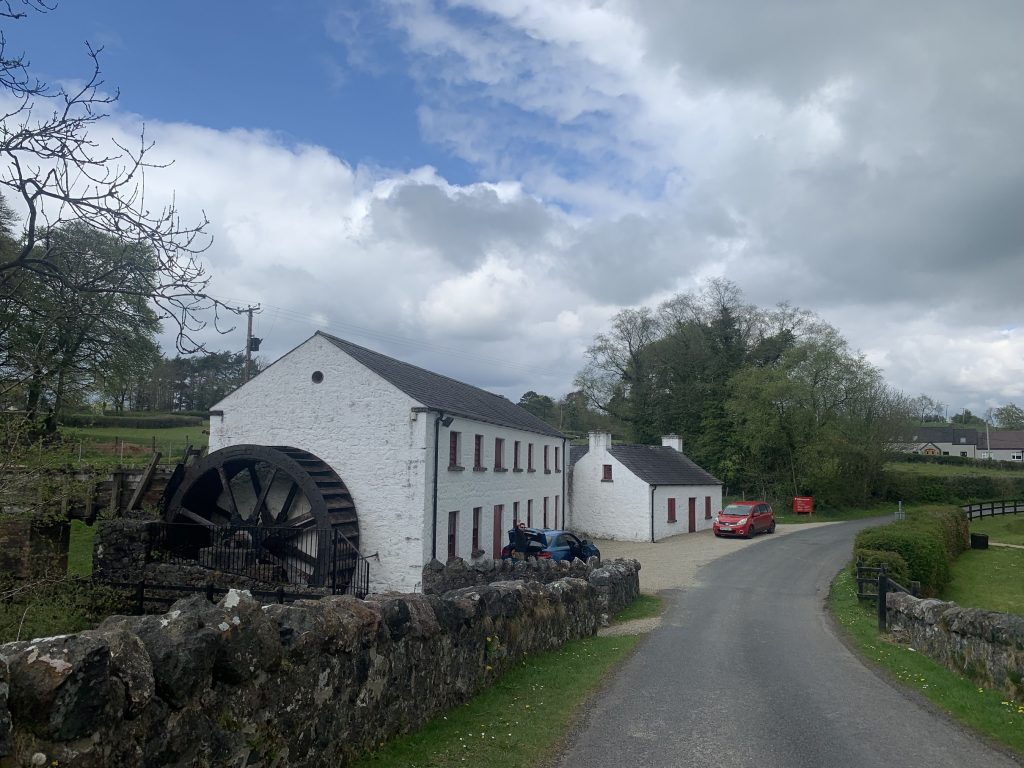For almost 200 years, Wellbrook in County Tyrone, Northern Ireland, was a water-powered beetling mill used in the manufacture of linen. Beetling was the final process in making linen and involved pounding the cloth with large wooden hammers, called beetles.

Wellbrook Beetling Mill, ©National Trust Images/Ana Copeland
The pounding of the beetling was loud and relentless, hammering from dusk until dawn. Volunteer Sebastian Graham tells stories of ‘workers using a form of sign language to communicate‘ and ‘that when the mill closed on Sundays the children in the area could not sleep as they were so used to the noise‘. Peter Souter, whose grandfather worked at another mill, shared that ‘the noise was horrendous. Everyone who worked there for any length of time ended up stone deaf’.
Although we know that workers in this industry often became deaf or experienced hearing loss as a direct result of their working conditions, there are no historical records of this at Wellbrook Beetling Mill. This raises questions around why some disabled people’s lives and experiences are recorded for posterity, while others’ are not.
To hear a fraction of just how loud the beetles were and for footage of Wellbrook Beetling Mill in action please visit the Mills of Northern Ireland website.

Wellbrook Beetling Mill, ©National Trust Images/Ana Copeland
Alternative reading
We invited our collaborators to offer their own personal reflections on some of the stories in Everywhere and Nowhere. In the section below Dr Shannon Fraser, National Trust Cultural Heritage Curator, Northern Ireland, offers an alternative reading of Wellbrook Beetling Mill.
My family has a long history of working in the textile industry, including jute processing in Aberdeen, weaving in Paisley and in Lurgan (Northern Ireland). Some of my ancestors will have had to confront similar conditions, and this project has made me reflect on what that really means, practically and psychologically.
Our popular narratives of the past often dwell on the economic success of nations in the 19th and earlier 20th centuries, built on the foundations of the industrial revolution of the 18th century. But much less is said about what that meant for the people who actually made it happen on the ground, and the impact it had on their lives… the lived experience of individuals makes you much more aware of the cost as well as the benefits. It helps you to reflect on how we can build on that understanding to help take modern society forward, in a more equitable way. The global textile industry still has much room for improvement in this respect.
References:
Graham, S. (2022) Email correspondence between Sebastian Graham and Sarah Plumb, October 2022
Souter, P. (date unknown) ‘Memories of Stormontfield‘ in Stormontfield Heritage, accessed June 2022